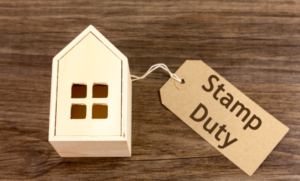 What is Stamp Duty?
What is Stamp Duty?
Stamp Duty Land Tax is a tax levied on people buying property or land in either England or Northern Ireland. The equivalent tax is known as Land and Buildings Transaction Tax in Scotland and Land Transaction Tax in Wales. It applies to freehold and leasehold properties.
Following an overhaul of the system in 2014, different rates of Stamp Duty are now payable on properties bought as a main residence for the buyer compared with investment properties or second homes. There was also a move away from charging a flat-rate percentage of the total sale price to a progressive system that is more akin to the way income tax is structured, whereby you pay a set rate for the first proportion of the sale price and then a higher rate on the portion that goes above a certain threshold.
First-time buyers are afforded a tax break on Stamp Duty up to £425,000. All other buyers don't have to pay tax on the first £250,000 of the property price.
How much is Stamp Duty?
There are different rates of Stamp Duty payable on the first property you buy, which is classified as your main residence, and subsequent properties. These are as follows:
Stamp Duty rates on main residences:
| Property Purchase Price |
Stamp Duty Rate
(percentage payable on proportion above each threshold)
|
| Up to £250,000 (£425,000 for first-time buyers) | 0% |
| £250,001 – £925,000 | 5% |
| £925,001 – £1,500,000 | 10% |
| £1,500,001 + | 12% |
Stamp Duty rates on additional properties:
| Property Purchase Price |
Stamp Duty Rate
(percentage payable on proportion above each threshold)
|
| Up to £250,000 | 3% |
| £250,001 – £925,000 | 8% |
| £925,001 – £1,500,000 | 13% |
| £1,500,001 + | 15% |
Who has to pay Stamp Duty?
Everyone buying a property in England and Northern Ireland has to pay Stamp Duty, with the following exceptions set out by HMRC. No Stamp Duty Land Tax is payable if:
- no money or other payment changes hands for a land or property transfer
- property is left to you in a will
- property is transferred because of a divorce or dissolution of a civil partnership
- you buy a freehold property for less than £40,000
- you buy a new or assigned lease of 7 years or more, as long as the premium is less than £40,000 and the annual rent is less than £1,000
- you buy a new or assigned lease of less than 7 years, as long as the amount you pay is less than the residential or non-residential Stamp Duty threshold
- you use alternative property financial arrangements, for example to comply with Sharia law
Different rates are available for other types of buyers, as set out on the HMRC website, including:
- first-time buyers
- multiple dwellers
- building companies buying an individual's home
- employers buying an employee's house
- local authorities making compulsory purchases
- charities
- right-to-buy properties
- registered social landlords
How much Stamp Duty do first-time buyers have to pay?
First-time buyers don't have to pay Stamp Duty on the first £425,000 of the purchase price, compared with £250,000 for other buyers, enabling people to get on the property ladder more easily.
How much Stamp Duty do landlords have to pay?
Prospective buy-to-let landlords were hit hard by the change to Stamp Duty rules in 2014 when they were faced with not only having to pay the standard rate, but also an additional 3% for each threshold band. This remains the case, with landlords with properties in addition to their own residences subject to the higher rate bands, as set out in the table above.
There is tax relief available for registered social landlords, with more details available on the HMRC website.
Do you have to pay Stamp Duty on a new home?
Stamp Duty is payable on new-build homes, although some developers incentivise buyers with an offer to pay all or part of the Stamp Duty bill. In effect, however, they are simply agreeing to drop the price of the property to the same value as the Stamp Duty would come to, rather than directly making the Stamp Duty payment on your behalf.
It is worth noting that in situations where you negotiate with the builders to include extras such as a higher quality fitted kitchen or bathroom, a conservatory or premium fixtures and fittings, the cost of these will be included within the Stamp Duty calculations. For example, if the purchase price is £500,000 but you agree to spend a further £5,000 on extras, you will have to pay Stamp Duty on the additional amount above the tax-free threshold.
Can you claim a refund on Stamp Duty?
If you are in a situation where there is an overlap between buying a property you intend to be your main residence and selling your current main residence, you could end up with two properties and, therefore, be liable for the higher rate of Stamp Duty on your purchase. The good news is that, if you subsequently sell the original property, you can submit a claim for a refund on the additional Stamp Duty (typically 3% extra for each threshold band).
To claim a Stamp Duty refund you must:
- sell your original property within three years, and
- put in a claim for a refund within three months of the sale of the original property, or within 12 months of the date you filed your Stamp duty tax return, whichever comes later
When do you pay Stamp Duty?
Since March 2019, Stamp Duty has been payable within 14 days of completing a property purchase. Prior to that, buyers had 30 days to make the payment.
In most cases the solicitor used to carry out the conveyancing will take control of making the payment, with many requesting that a client transfers the funds at the point of completion. However, while the solicitor may facilitate the payment, it is still ultimately the responsibility of the purchaser and he or she will face the consequences if they fail to make the payment or if it is late.
How do you pay Stamp Duty?
If your solicitor doesn't arrange the payment for you, you have to file a Stamp Duty tax return with HMRC and make payment directly to them. In order to do this, you will have to have an 11-character unique transaction reference number, which is included on your submission receipt when you file the return. You use this to make payment by card on the HMRC website or, alternatively, you can arrange a bank transfer, although you need to allow three working days for this to go through.
If you are considering adding the stamp duty costs to your mortgage loan, you should read our article, "Can you add stamp duty to your mortgage?".
What happens if you don't pay the Stamp Duty you owe?
The short answer is, you will be fined. The level of the fine depends on how late your payment is, if you file your return up to 3 months after the filing date you will be fined £100 and if you file your return 3 months or more after the filing date you will be fined £200. There is also a tax-based penalty if the return is not filed within 12 months and this can be as much as the tax that you owe. More information can be found on the government website.
In addition to the fine, you will also pay daily interest on the outstanding balance at an interest rate set by HM Treasury.


